
Filter News
Area of Research
- (-) Computational Engineering (2)
- (-) Energy Science (121)
- (-) Mathematics (1)
- Advanced Manufacturing (2)
- Biological Systems (2)
- Biology and Environment (140)
- Biology and Soft Matter (1)
- Computational Biology (1)
- Computer Science (8)
- Electricity and Smart Grid (1)
- Functional Materials for Energy (1)
- Fusion and Fission (7)
- Isotopes (2)
- Materials (53)
- Materials for Computing (10)
- National Security (30)
- Neutron Science (31)
- Nuclear Science and Technology (3)
- Quantum information Science (1)
- Sensors and Controls (1)
- Supercomputing (87)
- Transportation Systems (1)
News Topics
- (-) Artificial Intelligence (9)
- (-) Big Data (6)
- (-) Bioenergy (26)
- (-) Coronavirus (12)
- (-) Environment (54)
- (-) Polymers (11)
- (-) Security (6)
- 3-D Printing/Advanced Manufacturing (79)
- Advanced Reactors (6)
- Biology (11)
- Biomedical (7)
- Biotechnology (4)
- Buildings (38)
- Chemical Sciences (14)
- Clean Water (8)
- Composites (17)
- Computer Science (27)
- Critical Materials (9)
- Cybersecurity (8)
- Energy Storage (71)
- Exascale Computing (2)
- Fossil Energy (2)
- Frontier (2)
- Fusion (1)
- Grid (39)
- High-Performance Computing (7)
- Hydropower (3)
- Isotopes (1)
- Machine Learning (8)
- Materials (35)
- Materials Science (26)
- Mathematics (2)
- Mercury (3)
- Microelectronics (1)
- Microscopy (8)
- Molten Salt (1)
- Nanotechnology (8)
- National Security (5)
- Neutron Science (11)
- Nuclear Energy (7)
- Partnerships (12)
- Physics (1)
- Quantum Science (2)
- Simulation (4)
- Space Exploration (3)
- Statistics (1)
- Summit (5)
- Transportation (66)
Media Contacts

Improved data, models and analyses from ORNL scientists and many other researchers in the latest global climate assessment report provide new levels of certainty about what the future holds for the planet

As the United States transitions to clean energy, the country has an ambitious goal: cut carbon dioxide emissions in half by the year 2030, if not before. One of the solutions to help meet this challenge is found at ORNL as part of the Better Plants Program.
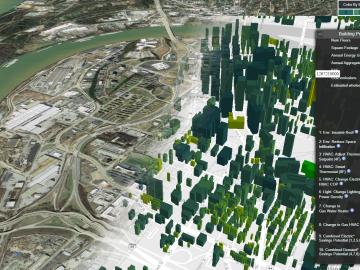
A new tool that simulates the energy profile of every building in America will give homeowners, utilities and companies a quick way to determine energy use and cost-effective retrofits that can reduce energy and carbon emissions.
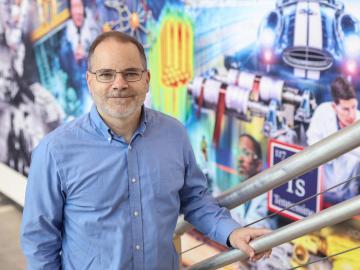
David Sholl is director of the new ORNL Transformational Decarbonization Initiative, working to elevate the lab’s prominence in decarbonization science and technology. Credit: Genevieve Martin, ORNL/U.S. Dept. of Energy.

ORNL’s Zhenglong Li led a team tasked with improving the current technique for converting ethanol to C3+ olefins and demonstrated a unique composite catalyst that upends current practice and drives down costs. The research was published in ACS Catalysis.
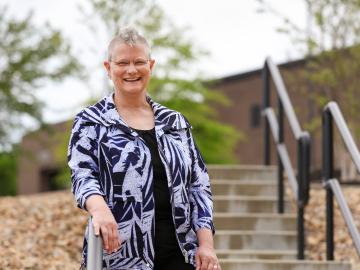
As a computer engineer at Oak Ridge National Laboratory, Gina Accawi has long been the quiet and steady force behind some of the Department of Energy’s most widely used online tools and applications.
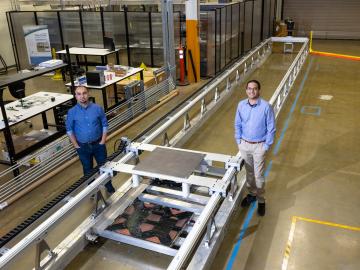
Consumer buy-in is key to the future of a decarbonized transportation sector in which electric vehicles largely replace today’s conventionally fueled cars and trucks.
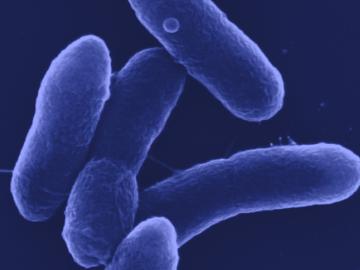
A research team led by Oak Ridge National Laboratory bioengineered a microbe to efficiently turn waste into itaconic acid, an industrial chemical used in plastics and paints.

Oak Ridge National Laboratory was among an international team, led by Lawrence Livermore National Laboratory, who synthesized 108 elevated carbon dioxide, or CO2, experiments performed in various ecosystems to find out how much carbon is
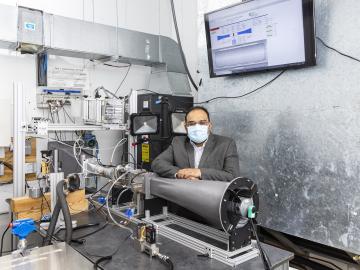
When Kashif Nawaz looks at a satellite map of the U.S., he sees millions of buildings that could hold a potential solution for the capture of carbon dioxide, a plentiful gas that can be harmful when excessive amounts are released into the atmosphere, raising the Earth’s temperature.


